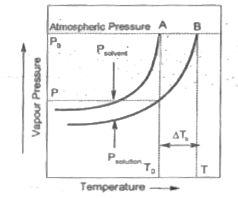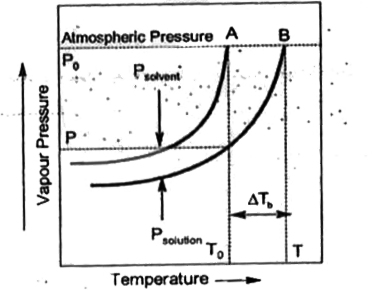Cyanide ion is
Nucleophilic
Electrolhilic
Strongly acidic
Non-reactive and neutral.
The correct Answer is:A
Step-by-Step Text Solution:
1. Definition of Cyanide Ion: The cyanide ion is represented as CN⁻. It consists of a carbon atom (C) triple-bonded to a nitrogen atom (N) and carries a negative charge.
2. Nature of the Cyanide Ion: The cyanide ion is classified as a nucleophile. Nucleophiles are species that donate an electron pair to form a chemical bond in a reaction.
3. Characteristics of Nucleophiles: Nucleophiles can either be negatively charged ions or neutral molecules with a lone pair of electrons that can be donated. In the case of cyanide, it is a negatively charged ion.
4. Charge Distribution in Cyanide Ion: In the cyanide ion, the negative charge is localized on the carbon atom. The carbon atom also has a lone pair of electrons, which enhances its nucleophilic character.
5. Resonance Structure: The cyanide ion can be represented by resonance structures. One common resonance structure shows a double bond between carbon and nitrogen, with the negative charge on carbon. This resonance contributes to the stability of the ion and its nucleophilic properties.
6. Conclusion: Therefore, the cyanide ion (CN⁻) is a nucleophilic species due to its negative charge and the presence of a lone pair of electrons on the carbon atom.
Topper's Solved these Questions
- BOOK - ERRORLESS CHAPTER - NITROGEN CONTAINING COMPOUNDS EXERCISE - PREPARATION OF NITROGEN CONTAINING COMPOUNDS191videos
NITROGEN CONTAINING COMPOUNDS
- BOOK - ERRORLESS CHAPTER - NITROGEN CONTAINING COMPOUNDS EXERCISE - PROPERTIES OF NITROGEN CONTAINING COMPOUNDS16videos
NITROGEN CONTAINING COMPOUNDS
- BOOK - ERRORLESS CHAPTER - IONIC EQUILIBRIUMEXERCISE - JS Jee Section (JEE Advanced (Numeric answer type question))1videos
IONIC EQUILIBRIUM
- BOOK - ERRORLESS CHAPTER - NUCLEAR CHEMISTRY EXERCISE - JEE SECTION (Matrix Match Type Questions)2videos
NUCLEAR CHEMISTRY
Similar Questions
At first glance the conversion of bromobenzene to benzenitrile looks simple just cary out a nucleophilic substitution using cyanide ion as the nucleophile. Then we remember that bromobenzene does not undergo either an SN1 or an SN2 reaction (Section 6.14A). The conversion can be accomplishes. however. thogh it involves severals steps. Outline possible steps.
View SolutionConsider following figure and answer the questions at the end of it. Figure explains elevation in boiling point when a non-volatile solute is added to a solvent.

Variation of vapour pressure with temperature and showing elevation in boiling point.
A complex of iron and cyanide ions is 100% ionized at 1m (molal). If elevation in boiling point is 2.08∘(Kb=0.52∘mol−1kg) then the complex is:View Solution
Knowledge Check
- Question 1 - Select One
A complex iron and cyanide ions is 100% ionised at 1 m (molal) . If its elevation in b.p is 2.08 . Then the complex is (Kb=0.52∘mol−1kg):
AK3[Fe(CN)6]BFe(CN)2CK4[Fe(CN)6]DFe(CN)4 - Question 2 - Select One
A complex of iron and cyanide ions is 100%ionised ar 1m (molal). If its elevation in b.p.is 2.08 then the complex is (Kb=0.52∘mol−1kg),
AK3[Fe(CN)6]BFe(CN)2CK4[Fe(CN)6]DFe(CN)4 - Question 3 - Select One
A complex of iron and cyanide ions is 100%ionised ar 1m (molal). If its elevation in b.p.is 2.08 then the complex is (Kb=0.52∘mol−1kg),
AK3[Fe(CN)6]BFe(CN)2CK6[Fe(CN)6]DFe(CN)4
Consider following figure and answer the questions at the end of it.
Figure explains elevation in boiling point when a non-volatile solute is added to a solvent.

Variation of vapour pressure with temperature and showing elevation in boiling point.
A complex of iron and cyanide ions is 100% ionized at 1m (molal). If its elevation in boiling point is 2.08∘(Kb=0.52∘mol−1kg) then the complex isView SolutionAromatic aldehydes in the presence of cyanide ion as catalyst, are converted to acyloins. This reaction is called
View SolutionAromatic aldehydes in the presence of cyanide ion as catalyst, are converted to acyloins. This reaction is called
View SolutionAssertion : Treatment of chloroethane with a saturated solution of AgCN gives ethyl isocyanide as the major product.
Reason : Cyanide(CN−) is an ambident nucelophileView SolutionIn the extraction of Ag and Au using a KCN solution, cyanide ions react with metal ions. Metal acts as
View Solution

